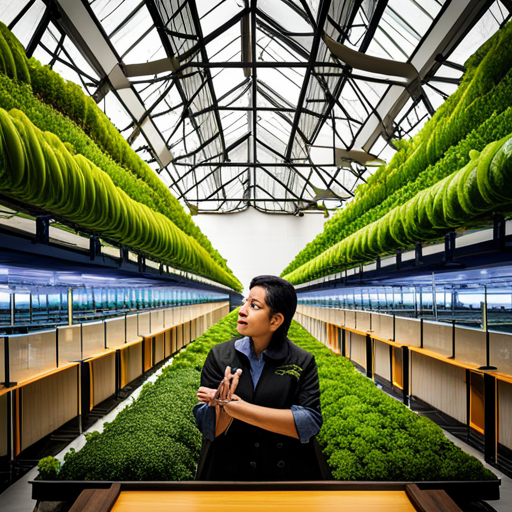 Loading... Please wait...
Loading... Please wait...Save Money. Grow Your Own!
Fast Plain Box Shipping.
We ship to the US & Canada.
888-493-7681
Grow Your Own!
Grow Your Own!
Exploring the Wonders of Hydroponics: A Revolutionary Approach to Modern Agriculture
Posted on 21st Oct 2023

Understanding Hydroponics:
Hydroponics, derived from the Greek words "hydro" (meaning water) and "ponos" (meaning labor), is a method of growing plants in a nutrient-rich water solution, without using soil. Instead of soil, plants are typically grown using an inert medium such as perlite, coconut coir, or rockwool, allowing the roots to directly access the necessary nutrients via the water solution.
Benefits of Hydroponics:
1. Water Efficiency: Hydroponics uses up to 90% less water compared to traditional soil-based agriculture. By recirculating and reusing water, it conserves this precious resource, making it ideal for regions facing water scarcity.
2. Optimal Nutrient Control: In hydroponics, nutrient levels can be closely monitored and adjusted to meet the specific needs of each plant variety. This precision allows for faster growth rates and higher yields compared to conventional farming methods.
3. Space Efficiency: Hydroponic systems can be set up vertically or horizontally, allowing for maximum space utilization. This can be particularly advantageous in urban areas or where land availability is limited, enabling year-round cultivation in smaller footprints.
4. Pest and Disease Control: Without relying on soil, hydroponics significantly reduces the risk of soil-borne pests and diseases, as well as weeds. This creates a cleaner and healthier environment for plant growth, eliminating the need for harmful pesticides or herbicides.
Applications of Hydroponics:
Hydroponic systems are adaptable and can be employed in various settings:
1. Commercial Farming: Hydroponics is gaining popularity among commercial farms for growing a wide range of produce, including leafy greens, herbs, strawberries, and tomatoes. It offers consistent yields, reduced crop cycle times, and provides an avenue for year-round production.
2. Home Gardening: Hydroponics is an excellent option for garden enthusiasts with limited space or adverse soil conditions. It allows individuals to cultivate fresh produce at home, even in apartments or urban areas, promoting sustainable living and healthy eating habits.
3. Research and Education: Due to its controlled environment, hydroponics is frequently used in scientific research, educational institutions, and botanical gardens. Its ease of experimentation and minimal requirements make it a valuable tool for studying plant growth and physiology.
The Future of Hydroponics:
As the global population continues to rise, and climate change poses challenges to traditional agriculture, hydroponics offers a promising solution. Its ability to alleviate water scarcity, reduce environmental impact, and provide controlled growth conditions could potentially transform global food production, ensuring food security for generations to come.
Hydroponics represents a revolutionary leap forward in agriculture, providing sustainable alternatives to traditional farming methods. With its numerous benefits, including water efficiency, precise nutrient control, and space optimization, hydroponics is gaining momentum across various sectors, from commercial farming to home gardening and scientific research. As we embrace this technology, it is crucial to explore and invest in its potential to build a more resilient and sustainable food system for future generations.
